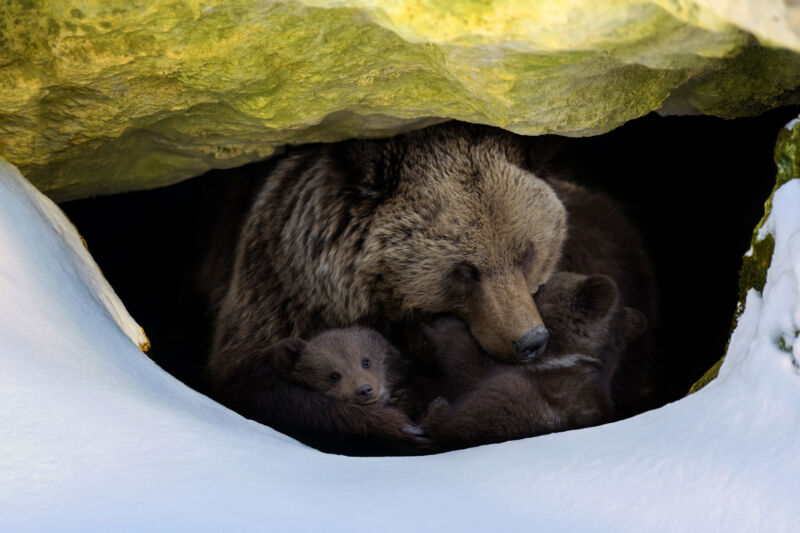Bear hibernation: More than a winter’s nap

Enlarge / A brown bear with two cubs looks out of its den in the woods under a large rock in winter. (credit: Byrdyak | Getty)
Every spring, as days in the north stretch longer and melting snow trickles into streams, drowsy animals ranging from grizzlies to ground squirrels start to rally from hibernation. It's tempting to say that that they are waking up," but hibernation is more complicated and mysterious than a simple long sleep: Any animal that can spend months underground without eating or drinking and still emerge ready to face the world has clearly mastered an amazing trick of biology.
The roster of animals that hibernate includes all manner of rodents, some amphibians and even a few primates (several species of dwarf lemurs), but bears are literally the biggest hibernators of them all. Adult grizzly and black bears weigh as much as American football players, or more, with the energy and curiosity of preschoolers, but they have no trouble hunkering down for months at time. The choreography that goes into shutting down a creature this big defies easy explanation, says Elena Gracheva, a neurophysiologist at Yale University in New Haven, Connecticut. Hibernation is so complex it requires adaptations at multiple levels," she says.
Bear hibernation offers important insights into the workings of large mammals, especially us, explains Gracheva, who coauthored an exploration of the physiology of hibernation in the 2020 Annual Review of Cell and Developmental Biology. A better understanding of the process could potentially change our approach to a wide range of human conditions, including stroke, osteoporosis, Parkinson's disease and Alzheimer's (see sidebar).
Read 29 remaining paragraphs | Comments